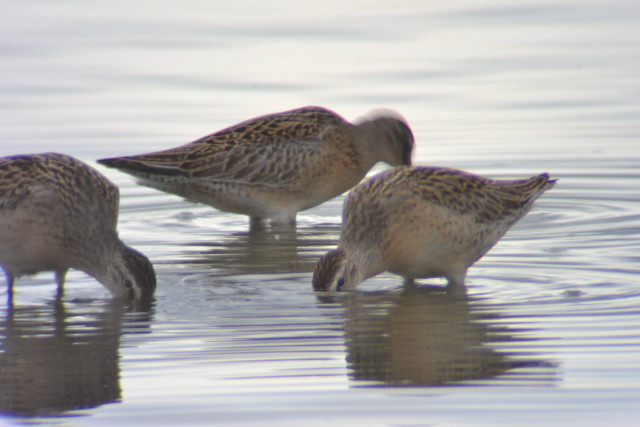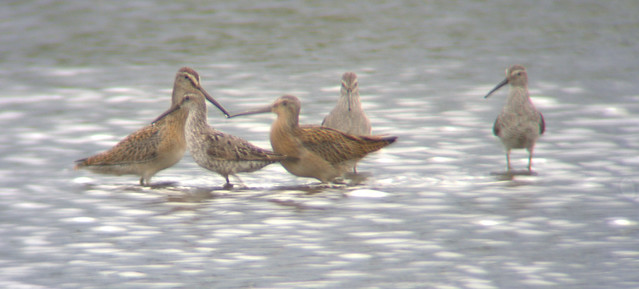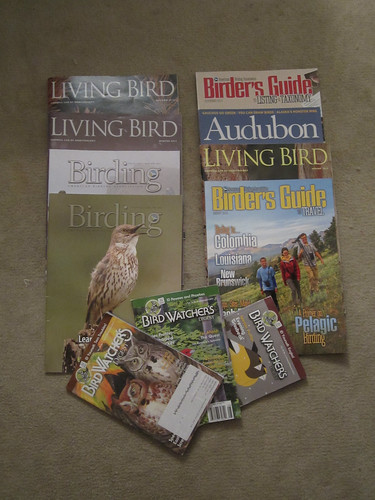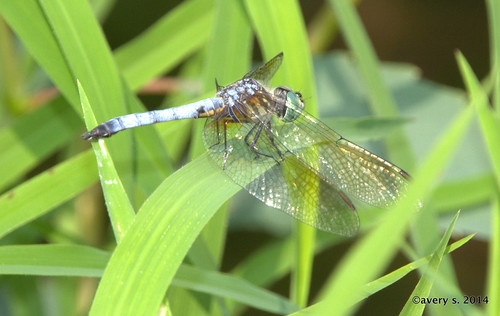If you've read this blog before, you'll remember from my last post that I had been stuck in the house for almost two months, unable to get out birding. Luckily for me, this last weekend in August provided a splendid opportunity to break that disturbing trend: the Jamaica Bay Shorebird Festival.
Jamaica Bay National Wildlife Refuge is one of the best birding spots in New York City; indeed, one of the best in the state. Every year in July and August, astounding numbers of migrating shorebirds land on the mudflats there to refuel for their journey south. And every year, just like the shorebirds, astounding numbers of birders trudge through the muck on the East Pond in order to observe the shorebirds.
For nine years, New York City Audubon and the American Littoral Society have organized an annual shorebird festival. This years included presentations on shorebird identification and photography from the likes of Lloyd Spitalnik and Kevin Karlson, as well as walks around both ponds.
Jamaica Bay National Wildlife Refuge is one of the best birding spots in New York City; indeed, one of the best in the state. Every year in July and August, astounding numbers of migrating shorebirds land on the mudflats there to refuel for their journey south. And every year, just like the shorebirds, astounding numbers of birders trudge through the muck on the East Pond in order to observe the shorebirds.
For nine years, New York City Audubon and the American Littoral Society have organized an annual shorebird festival. This years included presentations on shorebird identification and photography from the likes of Lloyd Spitalnik and Kevin Karlson, as well as walks around both ponds.
Arriving at Jamaica Bay on Saturday, I instantly went into the photography workshop and marveled at some lovely shorebird photos, in addition to learning more than a few things about how to photograph shorebirds and birds in general. After a brief conversation with Mr. Spitalnik, I slipped out the back door and onto the shorter of the two trails around the West Pond, hoping for some great birds (many rarities have shown up on the West Pond in previous years).
Not only did I not get great birds, I got hardly any birds at all. A Killdeer, Osprey and Canada Goose were the extent of birdlife on the West Pond.
Turning over to the bay, several Great Egrets stood serenely and surveyed the marsh and the water beyond, watching the American Oystercatchers and Laughing Gulls to make sure they didn't do anything naughty. Double-crested Cormorants stretched their wings, Barn Swallows swooped about and an Unidentified Tern flew over.
Nothing fantastic was hanging around the West Pond, so I turned around and came back. The East Pond and shorebirds were calling.
After getting the car parked in front of a rentable portable toilet storage area, I took a short trail down to the pond, squelched in some mud, got whacked in the face by a reed, and joined up with a group of scope-wielding shorebirders. This group was led by Kevin Karlson, one of the authors of The Shorebird Guide. If anyone knows anything about shorebirds it would be him, and he certainly proved his knowledge with his ample guidance on the fine points of shorebird identification.
As for the birds themselves, as soon as I got out of the reeds and onto the pond, they were there: about ten or twenty juvenile peeps, scurrying this way and that upon the mudflats and busily feeding. Upon closer examination, these birds proved to be Semipalmated and Least Sandpipers.
 |
| Semipalmated Sandpiper |
Hopping from reed to reed came a Northern Waterthrush, an un-warbler-like warbler. Three Short-billed Dowitchers drilled in a distinctive way--just like a sewing machine on legs. A Lesser Yellowlegs paid no heed as we stood watching it from five feet away.
 |
| Short-billed Dowitchers: sewing machines on legs |
Further down, the group focused intently on the challenging task of picking a single Western Sandpiper out of a flock of Semipalmateds. This was not an easy task, but one that the group accomplished in the end, not paying too much attention to the Cedar Waxwings and Eastern Kingbird in nearby trees. A Snowy Egret danced in the water, dwarfing the Least Sandpipers that scurried about his yellow-booted feet.
It was getting late, and there was another great presentation to attend at the visitor center. However, I could hardly tear myself away from an odd Least Sandpiper: it had only one leg. It hopped along the mud, moving at a surprisingly rapid pace, and then flew off, looking like a normal Least.
Over to my right, a Great Black-backed Gull landed on the water, but kept away from the Laughing, Ring-billed and Herring Gulls; it also maintained a respectful distance from some Mute Swans. Checking out some more of what I assumed to be Short-billed Dowitchers, we found among their midst three Stilt Sandpipers, a nice treat.
 |
| Can you pick the Stilt Sandpiper out from the Short-billed Dowitchers? |
And that was it, the conclusion of a remarkable day of shorebirding and workshops. As the car slid gently over the bridge leading over and out of Jamaica Bay, I took a last fleeting glimpse of the refuge and promised to come a-shorebirding again someday soon.
 |
| Least Sandpiper |



